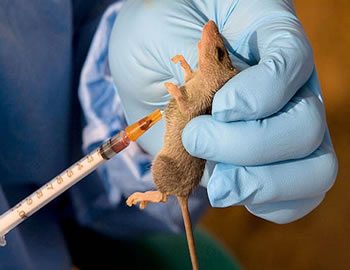In this piece, Osho Ayodeji presents basic things to know about Lassa fever such as its signs, symptoms, prevention and available treatments.
Lassa hemorrhagic fever popularly known as Lassa fever, is an acute viral fever observed first in Lassa, Borno State Nigeria.
Lassa fever is zoonotic, which means that the virus is passed by an animal bite on an uninfected person. The multimammate rat is the animal vector for Lasa fever. Mastomys nnatalensis otherwise called multimammate rat has been responsible for the spread of the disease in Nigeria, Liberia, Guinea and Sierra Leone.
The World Health Organisation (WHO) in its findings have said that humans usually get infected by exposure to urine or faeces of infected Mastomys rats and humans can spread the virus among each other by direct contact with blood, urine, faeces or other bodily secretions infected with the single RNA-strand virus.
Also, the world health body said the signs and symptoms of Lassa fever commonly happen between 1-3 weeks after direct contact with the virus. For most people, about 80% of people infected show mild symptoms which include: back pain, stomach pain, vomiting, swelling of the face, hearing loss, tremors, encephalitis (inflammation of the brain), mucosal bleeding (nose, mouth, lungs and digestive tract), diarrhea, malaise, weakness, slight fever, conjunctivitis, retrosternal pain (pain behind the chest wall) among others.
In the other 20% of infected people, hemorrhaging of the person’s eyes, gums, or nose, repeated vomiting, facial swelling and shock and neurological issues. The most common complication is deafness.
Lassa fever can cause death among infected people and the death rates for pregnant women in their third trimester is high. Spontaneous abortion is also common and the chances that such occurs is currently at 95% (pregnant mothers need to be more careful).
Enzyme-Linked Immunosorbent Assay also called ELISA or EIA is the major diagnostic means of Lassa fever.
Reverse trans-ion-polymerase chain reaction (RT-PCR) is used for testing at early stages.
Ribavarin is an antivral drug that has been used with success to treat Lassa fever.
There is currently no vaccine for Lassa fever.
Lassa fever is difficult to differentiate from Ebola virus, but succinctly, it is an acute contagious viral disease of central western Africa, which is characterised by fever and inflammation and muscular pains and difficulty swallowing. Scientists also said it can be used as a bioweapon.
To stay safe, prevention is better than cure. This cliché works just fine here too. Good hygiene, setting rat traps, covering foods and water properly, cooking foods thoroughly, storing foods in rodent-proof containers, and discarding off of all uncovered foods is necessary.
•Ayodeji, a freelance health writer, blogger and medical student from the University of Ibadan, (UI), write in via his email: aypulse268@gmail.com. He is on FB @Osho Ayodeji and Twitter @OshoAyodeji
WATCH TOP VIDEOS FROM NIGERIAN TRIBUNE TV
- Let’s Talk About SELF-AWARENESS
- Is Your Confidence Mistaken for Pride? Let’s talk about it
- Is Etiquette About Perfection…Or Just Not Being Rude?
- Top Psychologist Reveal 3 Signs You’re Struggling With Imposter Syndrome
- Do You Pick Up Work-Related Calls at Midnight or Never? Let’s Talk About Boundaries






